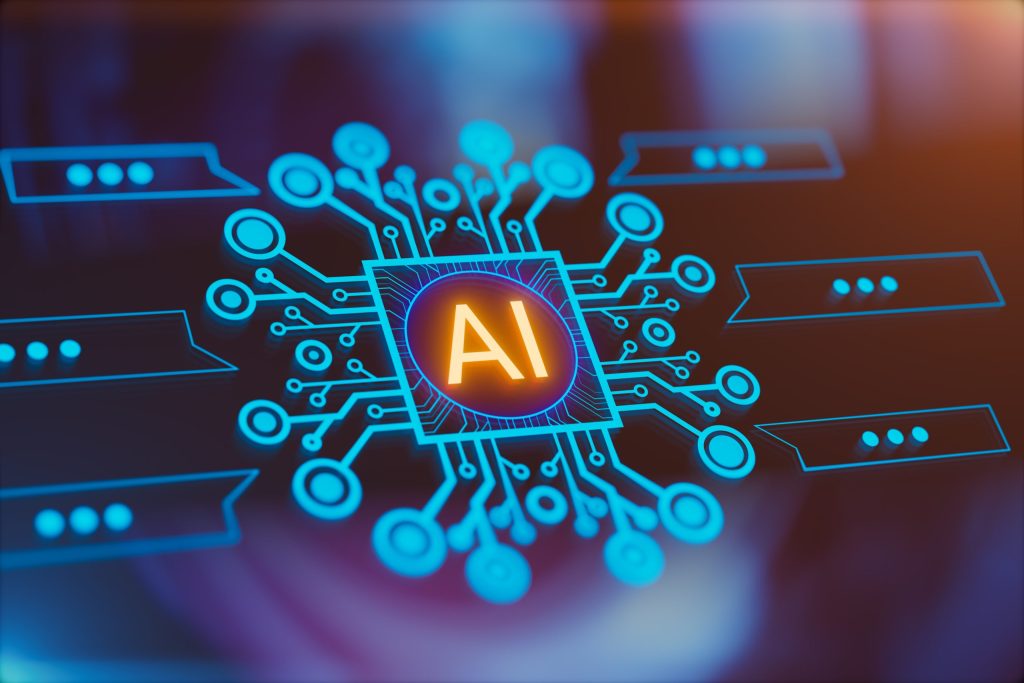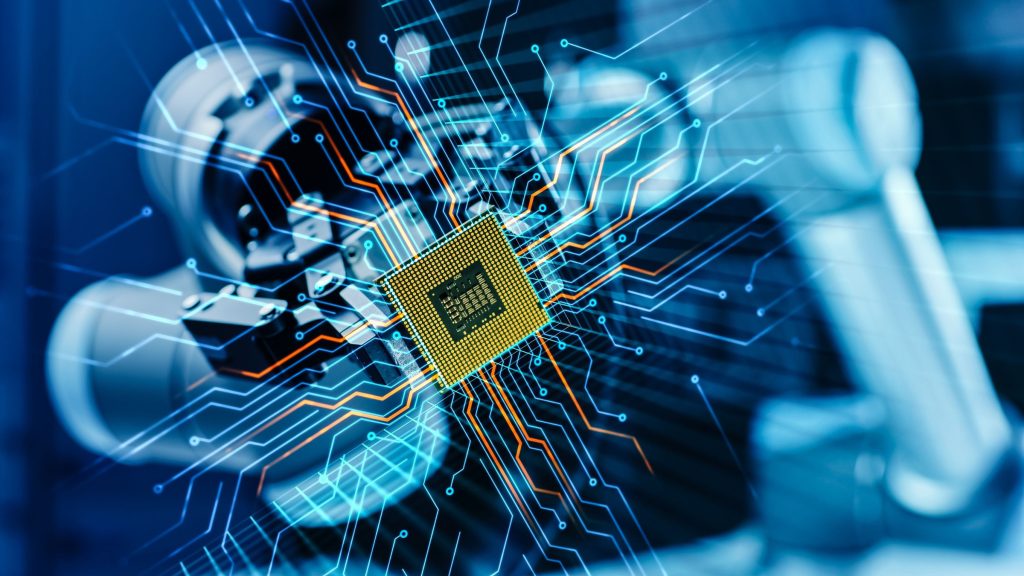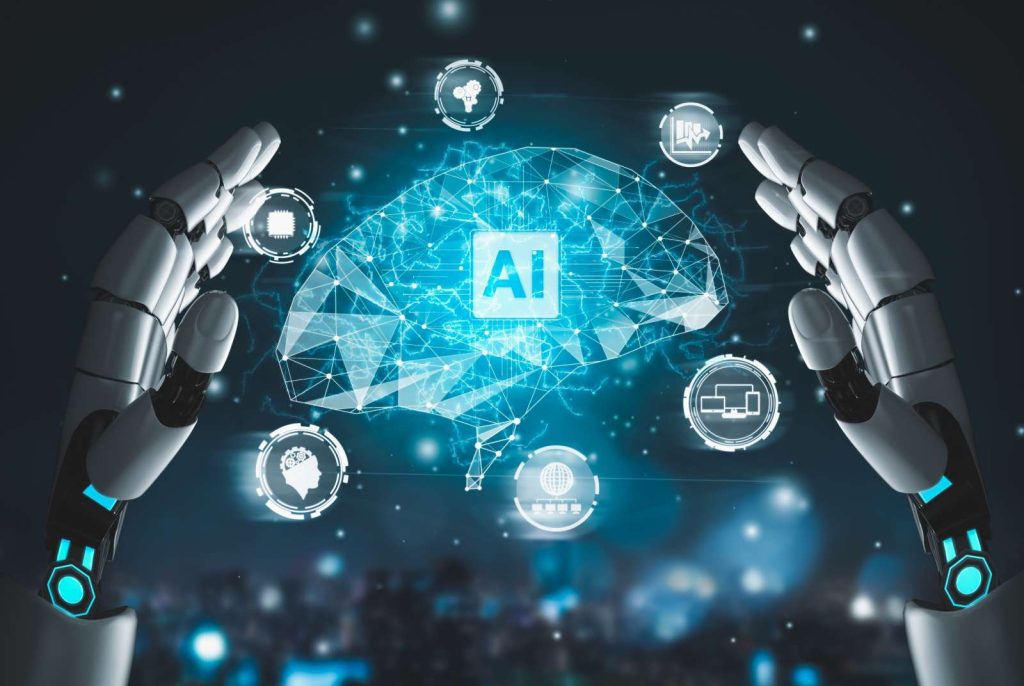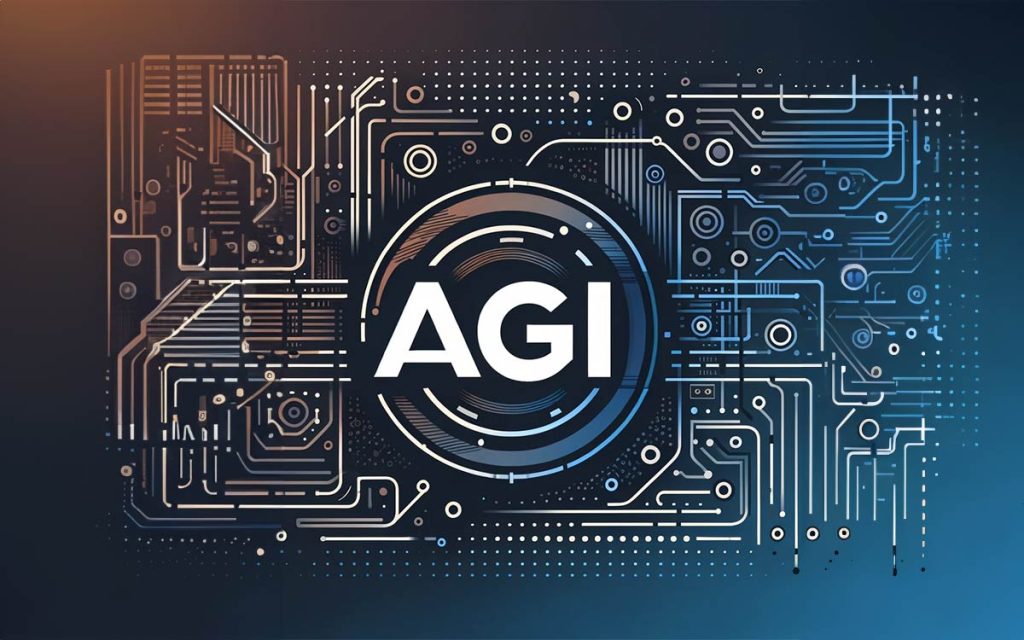Artificial Intelligence (AI) has been a hot topic in the tech industry for several years now. It has revolutionized the way we live, work and interact with technology. From virtual assistants like Siri and Alexa, to self-driving cars and automated customer service systems, AI has become an integral part of our daily lives.
But the true potential of AI lies in its ability to evolve into what is known as Artificial General Intelligence (AGI). AGI refers to a form of artificial intelligence that is capable of performing any intellectual task that a human being can. In simpler terms, it means creating machines that can think, learn, adapt and make decisions just like humans do.
In this article, we will delve deeper into the concept of AGI and explore its implications for the future of humanity.
What is AGI?
AGI, also known as Strong AI or General Intelligence, refers to the ability of machines to perform any intellectual task that a human can do. This includes tasks such as reasoning, problem-solving, learning, and creativity. Unlike narrow AI, which is designed to perform specific tasks, AGI aims to replicate human-level intelligence in all its forms.
The concept of AGI dates back to the 1950s when researchers began exploring the possibility of creating machines that could think and learn like humans. However, it wasn’t until the advent of powerful computers and advanced algorithms in recent years that AGI research has gained significant momentum.

Unlike narrow AI, which focuses on specific tasks, AGI strives to emulate human-level intelligence across various domains
Currently, there is no single definition of Artificial General Intelligence that is universally accepted among researchers. Some argue that AGI should be defined as the ability to perform any cognitive task that a human can, while others believe that it should include emotional intelligence and consciousness as well. However, the general consensus is that AGI is still a theoretical concept and has not yet been achieved.
Difference between AGI and Narrow AI
Narrow AI, also known as Weak AI, is the type of artificial intelligence that we see in our daily lives. It is designed to perform specific tasks such as image recognition, language translation, or playing games like chess or go. Narrow AI is programmed and trained for a specific purpose and cannot perform any other task outside its designated scope.
On the other hand, Artificial General Intelligence aims to replicate human intelligence in all its forms. It is not limited to a specific task or function and can adapt and learn from different situations. For example, an AGI system could play chess and then switch to painting, just like a human does.
Another major difference between AGI and narrow AI is their level of autonomy. While narrow AI systems are designed and controlled by humans, AGI systems would have the capability to learn and make decisions on their own, without human intervention.
Historical Background and Current State of AGI Research
The idea of creating machines that could think like humans has been around for centuries. In 1637, philosopher René Descartes theorized that animals were mere automatons, and the same principle could be applied to machines. The term “artificial intelligence” was first coined by John McCarthy in 1955, and since then, there have been numerous attempts at creating AGI.
In the 1950s and 1960s, researchers focused on developing rule-based systems that could mimic human reasoning. These early attempts failed because they were unable to deal with ambiguity and uncertainty, which are essential components of human intelligence.
In the 1980s, researchers shifted their focus towards neural networks, which are computer systems inspired by the structure of the human brain. However, these systems also fell short of achieving AGI due to limitations in computing power and data availability.
The current state of Artificial General Intelligence research is more promising than ever before, thanks to the advancements in computing power, algorithms, and data availability. Companies like Google, OpenAI, and DeepMind are investing significant resources into AGI research and have made significant breakthroughs in recent years. However, most experts believe that we are still far from achieving true AGI.
Advantages and Benefits of AGI
The concept of AGI has many potential advantages and benefits that could significantly impact various industries and fields. Let’s take a closer look at some of these potential benefits:

The idea of AGI holds numerous potential advantages and benefits that could have a substantial impact across multiple industries and disciplines
Increased Efficiency and Productivity
One of the main advantages of AGI is its potential to increase efficiency and productivity in various industries. By automating complex tasks and decision-making processes, AGI systems could free up human resources and allow them to focus on more creative and high-level tasks. This could lead to significant cost savings for companies and allow them to operate more efficiently.
With the help of Artificial General Intelligence, businesses could also streamline their operations and make more informed decisions. For example, an AGI-powered system can analyze large amounts of data and provide insights that could help companies optimize their supply chain or marketing strategies.
Solving Complex Problems and Decision Making
One of the primary goals of AGI research is to create machines that can solve complex problems and make decisions just like humans do. This has huge implications for fields such as scientific research, medicine, and engineering, where complex problems require a high level of intelligence and problem-solving skills.
For instance, an AGI system could analyze vast amounts of data, identify patterns, and make connections that human researchers may have missed. This could lead to significant breakthroughs in various fields and accelerate the pace of scientific progress.
Potential for Scientific and Medical Breakthroughs
As mentioned earlier, the ability of AGI systems to tackle complex problems and make decisions could have a significant impact on scientific and medical research. With AGI’s help, scientists and researchers could analyze vast amounts of data from various sources and make connections that could lead to new discoveries and cures for diseases.
In the medical field, Artificial General Intelligence could aid in diagnosing diseases, analyzing patient data, and developing personalized treatment plans. It could also assist in drug discovery and development, which is a time-consuming process that requires extensive research and testing.
Challenges and Risks of AGI
While the potential benefits of AGI are undeniable, there are also several challenges and risks associated with its development and implementation. Let’s take a look at some of these concerns:

Although the potential advantages of AGI are clear, its development and implementation also pose several challenges and risks
Fear of Job Displacement
One of the main fears surrounding the development of AGI is the potential job displacement it could lead to. With machines becoming increasingly capable of performing tasks that were once exclusive to humans, there is a fear that millions of jobs could become obsolete.
According to a report by McKinsey, up to 800 million jobs could be automated by 2030 due to advancements in AI and automation. This could have a significant impact on the global workforce and lead to widespread unemployment.
Ethical Concerns
Another major concern about AGI is its potential for unethical behavior. As AGI systems become more autonomous and capable of learning and making decisions on their own, there is a risk that they could act in ways that are harmful or unethical.
For example, if an AGI system is programmed with biased data, it could make biased decisions without being aware of it. This could have serious consequences, especially in areas such as healthcare and criminal justice, where fairness and impartiality are crucial.
Possible Dangers and Need for Regulation
The development of AGI also raises concerns about potential dangers and the need for regulation. Some experts fear that if AGI is not developed responsibly, it could pose a threat to humanity. For instance, if an AGI system designed for military purposes falls into the wrong hands, it could have catastrophic consequences.
Therefore, many experts believe that Artificial General Intelligence research should be accompanied by strict regulations and ethical guidelines to ensure that the technology is developed safely and responsibly.
The Race for AGI Dominance
As the potential of AGI becomes increasingly evident, there has been a race among companies and countries to achieve dominance in this field. Let’s take a closer look at some of the key players in AGI research and the competition between them.
Major Players in AGI Research and Development
Some of the biggest names in the tech industry, such as Google, Facebook, and Amazon, are also heavily invested in AGI research and development. In fact, Google’s DeepMind division has made significant breakthroughs in the field and is considered one of the leaders in AGI research.
Other notable players in the field include OpenAI, a nonprofit research organization co-founded by Elon Musk, and IBM, which has been working on artificial intelligence for several decades. The Chinese government is also investing heavily in AGI research, with the aim of becoming a global leader in this field.
Government Involvement and Funding
The race for AGI dominance is not limited to the private sector; governments around the world are also getting involved. In 2016, the European Union launched the Human Brain Project, which aims to simulate the human brain using supercomputers. Similarly, the U.S. government has allocated significant funding for AI research, which includes AGI as well.
However, the most significant investment in AGI research comes from China. The Chinese government plans to invest over $150 billion in AI and become a global leader in this field by 2030.
Competition and Collaboration among Companies
While there is fierce competition between companies to achieve AGI, there is also a significant amount of collaboration and partnerships happening in the industry. For instance, Google’s DeepMind has partnered with various universities and research institutes to advance their knowledge in AGI.
Similarly, OpenAI has collaborated with Microsoft to develop AGI systems that can learn from natural language interactions. These collaborations not only accelerate the pace of research but also facilitate the sharing of knowledge and resources.
Impact of AGI on Society
As AGI continues to evolve and become more advanced, it will have a profound impact on society. Let’s take a look at some of the potential implications of AGI on various aspects of our lives:
Economic and Social Implications
The economic implications of AGI are quite significant. As machines take over more tasks and jobs become automated, there will be a significant shift in the job market, resulting in widespread unemployment and income inequality.
Additionally, the increased efficiency and productivity brought about by AGI could lead to a widening wealth gap between those who own the technology and those who don’t. This could have far-reaching consequences for society, such as social unrest and political instability.
Changes in the Job Market and Workforce
As mentioned earlier, one of the main concerns about AGI is the potential job displacement it could lead to. According to a study by McKinsey, up to 30% of jobs in developed countries could be replaced by machines and software in the next two decades.
However, with the rise of AGI, there will also be a need for new types of jobs that require skills that machines cannot replicate, such as creativity, emotional intelligence, and critical thinking. Therefore, it is essential for individuals to adapt and develop these skills to remain relevant in the workforce.
Potential Impact on Education and Skills Training
The development of AGI will also have a significant impact on education and skills training. As the demand for skilled workers in areas such as AI and data science increases, there will be a greater focus on teaching these skills in schools and universities.
Additionally, there will be a need for continuous learning and upskilling, as the technology landscape continues to evolve at a rapid pace. Governments and educational institutions will need to collaborate to develop programs that equip individuals with the necessary skills to thrive in a world where AGI is prevalent.
The Future of AGI: Possibilities and Limitations
It is clear that the development of AGI has the potential to change the world in many ways. However, there are also several limitations and challenges that need to be overcome before we can achieve true AGI. Let’s take a look at some of these possibilities and limitations:
Predictions and Speculations about the Future of AGI
There have been many predictions and speculations about the future of AGI, ranging from optimistic to pessimistic. Some experts believe that we are only a few years away from achieving AGI, while others think that it may take several decades.
Some also speculate that AGI could bring about a utopian society, where machines take care of all our needs and free us from mundane tasks. However, others fear that it could lead to a dystopian future, where machines become our overlords and threaten humanity’s existence.
Limitations and Challenges in Achieving AGI
Despite the advancements made in AGI research, there are still significant limitations and challenges that need to be addressed. One of the main challenges is creating an AGI system that has human-level intelligence while still being safe and ethical.
Another limitation is the lack of understanding of how the human brain works. While we have made significant progress in AI and neuroscience, there is still much we don’t know about the brain’s inner workings. This makes it difficult to replicate human-level intelligence in machines.
Potential Breakthroughs and Developments in the Near Future
Despite the limitations and challenges, the future looks promising for AGI. With the advancements in computing power, algorithms, and data availability, we can expect significant breakthroughs and developments in this field in the near future.
Some experts believe that we will achieve AGI in the next decade or two, while others think it may take longer. However, with the rapid pace of technological advancements, it is safe to say that we are on the brink of a new era in AI and AGI.
Conclusion
The concept of AGI is both exciting and intimidating. On one hand, it has the potential to revolutionize the way we live, work and interact with technology. On the other hand, it raises concerns about job displacement, ethical issues, and the possibility of a dystopian future.
However, as with any emerging technology, it is essential to proceed with caution and ensure responsible development and implementation. Governments, companies, and individuals must work together to address the challenges and risks associated with AGI and steer it towards a positive and beneficial future for humanity.
